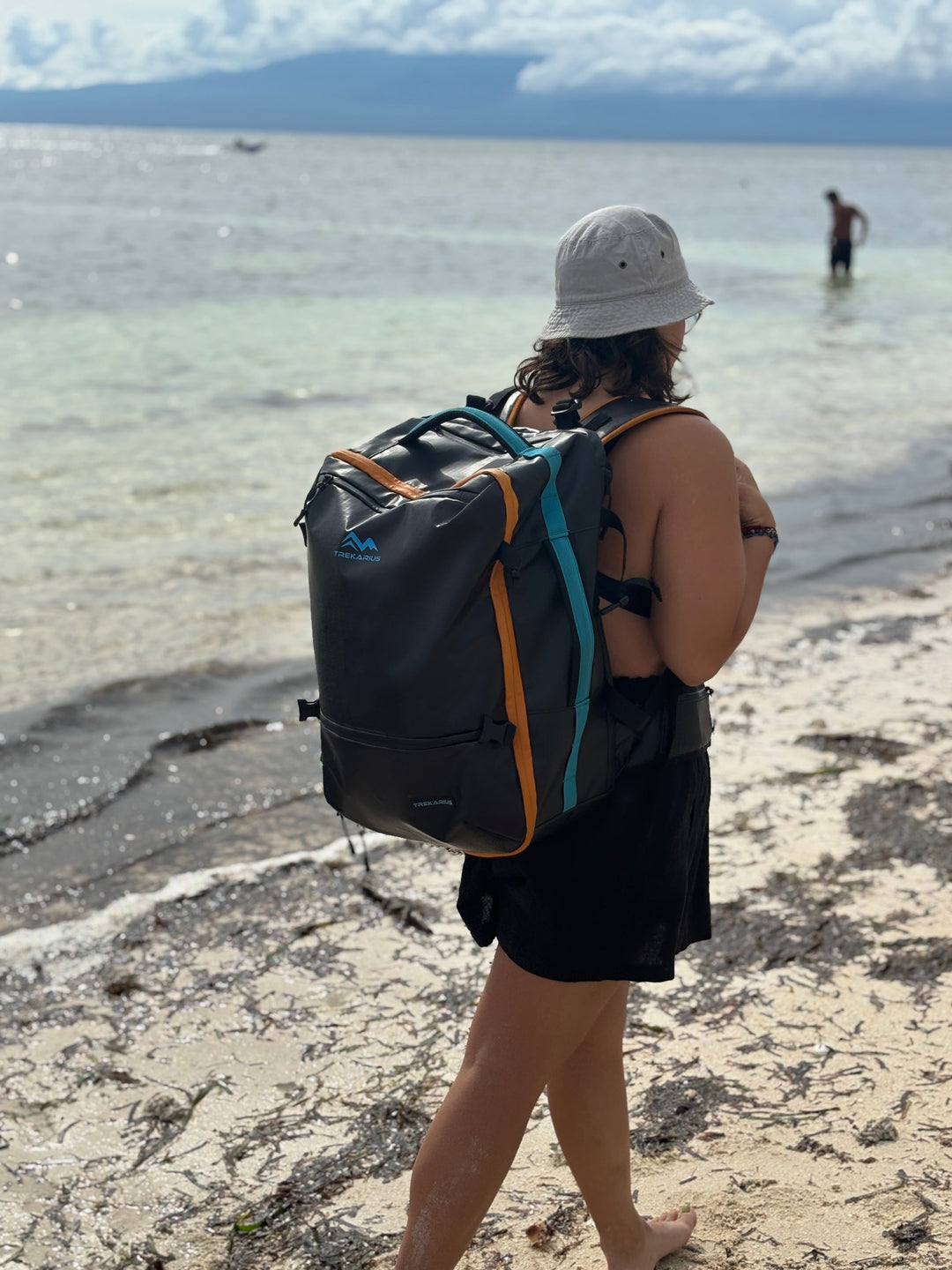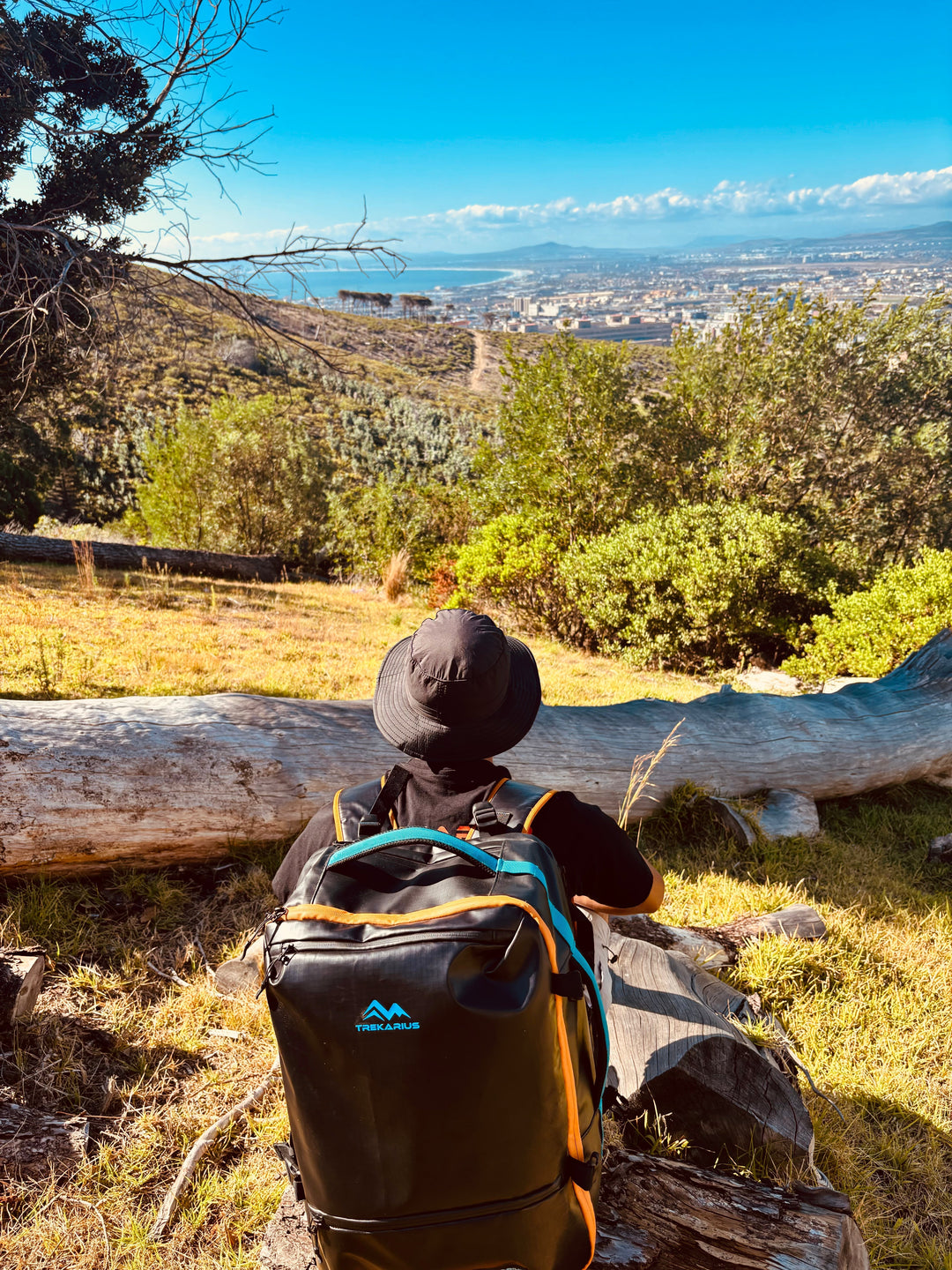Anti-Theft Isn’t Optional: Hard Lessons From Gangs, Markets, and Border Crossings

There’s a moment most travellers remember—normally somewhere between a crowded market and a bus station—when you feel that brush on your pocket and think, “Was that…?” If you’ve never had that moment, brilliant. If you have, you’ll know the sinking feeling that follows.
The truth: anti-theft isn’t a feature you buy; it’s a system you practice. Yes, a good kit helps. But awareness, layout, and habits are what keep your things yours—especially when a place is loud, busy, or a bit opportunistic.
This is your calm, field-tested guide to staying one step ahead—without turning your trip into a tense military exercise.
The mindset: blend in, look busy, be boring
Thieves pick patterns: distracted tourists, dangling phones, exposed zips, bulky back pockets. Your aim is to look like work, not a quick win.
- Hands free, head up. If you’re juggling two totes and a coffee, you’re easy money.
- Fiddle with nothing. Constantly checking your passport screams, “It’s right here”.
- Be boring gear. Neutrals, clean lines, no designer monograms. Nice kit, low profile.
Your anti-theft system (four layers)
Think of protection like clothing layers—simple, stacked, adaptable.
-
Behavioural layer
- Stand with your bag touching your leg in queues.
- Step off the flow to check maps or messages.
- Keep one earbud out; you’ll hear the change around you.
-
Layout layer
- Split money/cards into two places.
- Put day cash/card front and centre; backup elsewhere.
- Keep your passport in a non-obvious pocket that you can feel.
-
Access layer
- Fast-grab items up top; valuables deeper.
- Water/snacks accessible so you’re not rummaging in public.
- Repack somewhere controlled (café corner, station bench facing the room).
-
Community layer
- Ask your hostel or café staff where pickpockets operate.
- Walk with crowds leaving stadiums/markets, not against them.
- If something feels “off”, treat it as off. Gut > bravado.

Slash-Proof Fabric: Rip Stop Nylon 600D Army Grade
Lockable Zippers: Hidden under flaps + self-healing coil zippers (hooks slide right off)
RFID-Blocking Pocket: Stops digital pickpocketing (thieves can't scan your cards)
Anti-Theft Compartments: Valuables locked in internal pockets (even if unzipped, thieves can't reach)
Pro Tactics:
"Wear Trekarius FRONTWARD in markets. Thieves target backs. Your bag becomes a bodyguard. I tested this in 12 markets—zero incidents." – Alex, 5-year nomad.
Zone 2: Border Crossings (Tijuana, Istanbul, Cambodia)
The Brutal Reality:
"At Cambodia's Poipet border, men in fake uniforms demanded my passport for 'inspection.' While distracted, someone unzipped my backpack. Stole my camera, $800 cash, and prescription medication. I was stranded for days." – David, scammed at the border.
Thief Tactics Explained:
- Fake Authority: Uniformed officials demand documents while accomplices raid bags
- Bag Switching: Identical bags swapped in chaotic checkpoints
- Diversion Raids: Create arguments/fights to snatch unattended luggage
- Bribery Traps: Demand fees to "process" documents while stealing
Why Trekarius Dominates Here:

Street tactics used by professionals (and how to counter them)
- The sandwich. One person stops short; another nudges from behind.
- Counter: Keep a palm on your front pocket or bag zip; step sideways, not forward.
- The spill. Someone “accidentally” splashes or drops something, and a helper appears.
- Counter: Step back, palm your pocket/zip, decline help with a smile, move on.
- The clipboard/bracelet crowd. Distract and crowd, then lift and pass.
- Counter: Side-step, say “no thanks” while moving; never let anyone encircle you.
- The bus burst. Last-second push aboard, lift in the crush.
- Counter: Board early or last; keep the bag on your chest until you’re settled.
- The fake official. Demands to check the wallet/passport.
- Counter: Ask to go to a police station. Never hand over items on the street.

Markets, buses, borders: your playbook
In markets
- Wear your backpack front-to-back if it’s shoulder-to-shoulder crowded.
- Keep the phone in a zip pocket, not a back trouser pocket.
- Pay with small notes; don’t flash the roll.
On buses/trains
- In stations, keep the bag on your lap or between your feet with a strap looped around your leg.
- Overnight, use your bag as a pillow or anchor a strap to your arm.
- Keep only the ticket, a card, and an ID photocopy in fast access; everything else deeper.
At borders and security checkpoints
- Slow down; re-pack after inspection, away from the scrum.
- Count your items out loud in your head: passport, wallet, phone, bag, jacket.
- Don’t let “helpers” carry your bag; a firm smile and “I’m fine, cheers” does wonders.
How smart layout actually looks (no gimmicks, just discipline)
- Front/top pockets = fast: tissues, hand gel, sunglasses, snack, water, one payment card.
- Main compartment = slow: clothes cubes, spare shoes, wash kit, electronics pouch.
- Valuables = discreet: passport and backup cards in a non-obvious pocket.
Where the Trekarius Travel Pack 35L helps (without over-claiming)
Link: Trekarius Travel Pack 35L
This pack doesn’t shout “anti-theft”—and that’s fine. What it does offer, according to its published features, are thoughtful pockets and access that support a safer carry style:
Materials & build (practical, durable):
- Shell: 100% RPET 600D ripstop with TPU coating (water-resistant).
- Lining: 100% RPET 210D PU2T.
- Webbing: PP.
- Zips: SBS.
- Buckles: Woojin.
Capacity & organisation (keep valuables away from obvious zips):
- 35 litres.
- 1 large main compartment with 2 main dividers and multiple interior pockets—ideal for keeping important items deeper in the bag.
Access that suits your system:
- Main big opening for controlled packing/unpacking away from crowds.
- Quick-access front opening, front pocket, and top hanging pocket for non-sensitive items you need often.
- Side water pocket so you’re not opening the main zip every 15 minutes.
Discreet pockets for sensitive items:
- Hidden back pocket (a natural home for your passport).
- Two small hidden pockets on the shoulder straps (tap-and-go card or a tiny cash fold).
- Two small pockets on the removable waist belt (tickets, coins, lip balm).
Comfort & carry when you need both hands free:
- EVA-lined shoulder straps, PU-foam padded back panel, adjustable sternum strap.
- Top handle and side handle for quick lifts in tight spaces.
None of the above is an “anti-theft guarantee”—just practical features that support smarter habits.
Build your own anti-theft load-out (5 minutes, real gains)
- Decoy wallet (optional): a couple of small notes and expired cards.
- Primary wallet: one card + small cash, lives in front/top pocket.
- Backup cash + card: sealed in a small envelope in a hidden pocket.
- Passport: hidden back pocket, zipped; copies in your phone/cloud.
- Phone: zipped pocket only; wrist loop if you’re a chronic dropper.
- Tiny whistle: clipped inside—deterrent, not drama.
What to do if something goes wrong (calm, step-by-step)
- Get to safety and breathe. Don’t chase. Groups want you to run.
- Lock down your accounts (bank apps, password manager, mobile network).
- Report to local police (even if it’s “for the paperwork”).
- Call your insurer; log the incident immediately.
- Re-kit from your backups (cash/card from the hidden pocket, digital copies for ID).
Quick FAQs
Do I need a money belt?
Not usually. Hidden pockets in your bag and sensible habits are more comfortable and just as effective for most trips.
Front carry or back carry?
Back is fine in normal flow; switch to front in dense crowds and on busy public transport.
Is a “slash-proof” strap essential?
Helpful in some contexts, but not mandatory. Your behaviour, layout, and awareness do most of the heavy lifting.
Where should the passport live?
In a zipped, non-obvious pocket you can feel—like a hidden back pocket in your pack—plus digital copies on your phone.
Anti-theft, summarised
- Looks like work, not a win.
- Split valuables and commit to a pocket map.
- Fast access for non-sensitive items, deep storage for the rest.
- Repack away from the crowd.
- If it feels off, it is.
Gear won’t replace good habits—but the right layout and pockets make good habits easy. If you want a pack that supports this system without the gimmicks, have a look at the Trekarius Travel Pack 35L. It keeps your everyday items handy, your sensitive items discreet, and your hands free for the adventure you actually came for.






